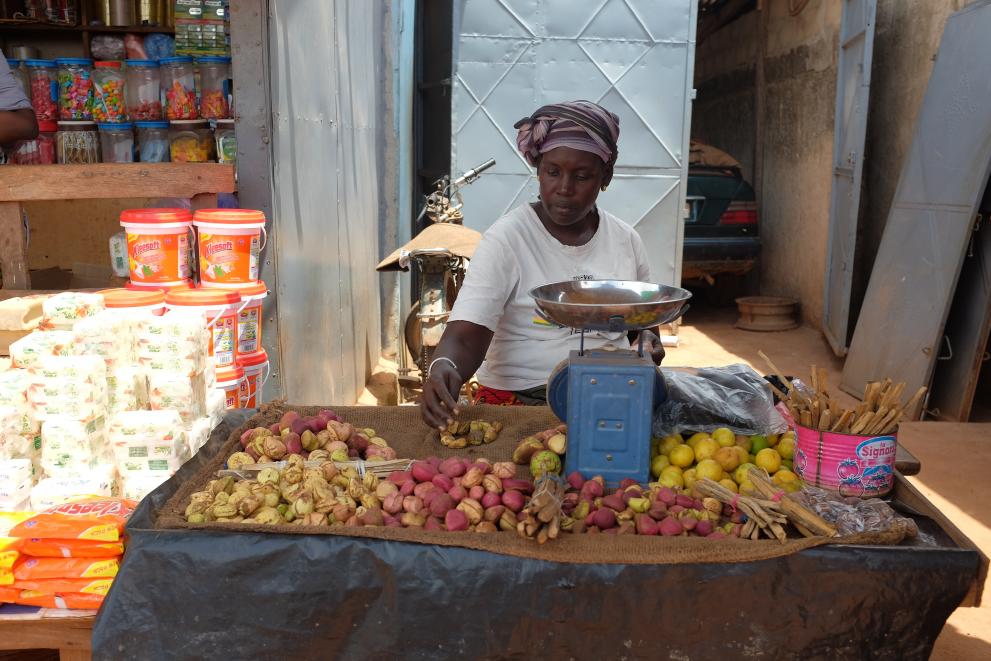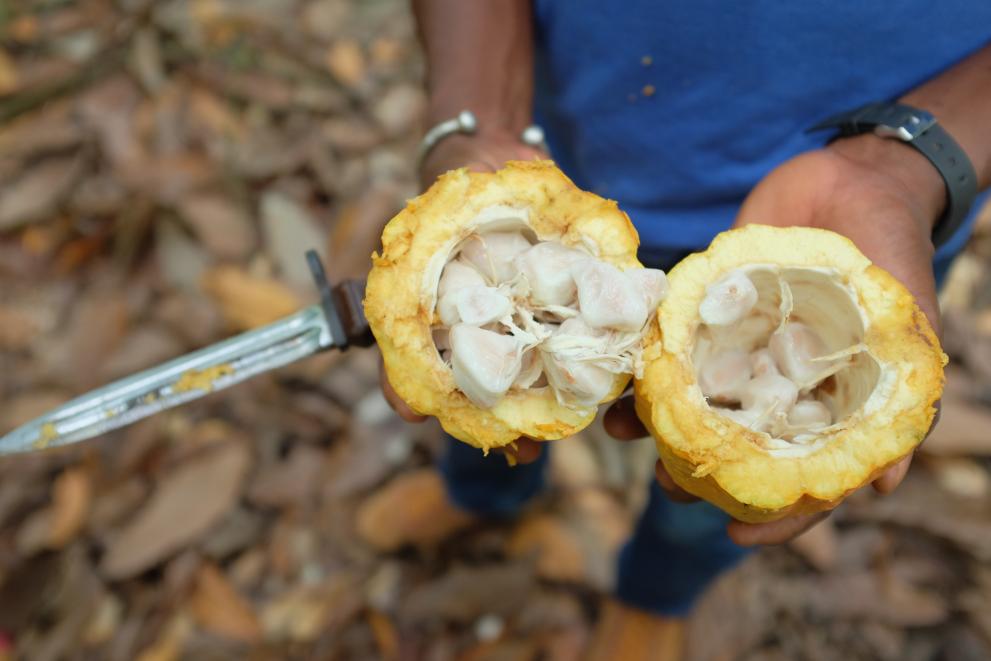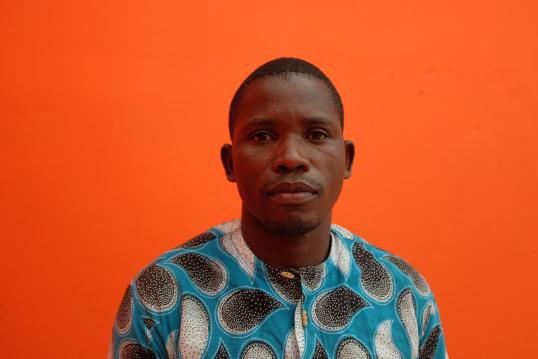When a major drought hit the South-West of Côte d’Ivoire in 2015, much of the expected harvest of the country’s main commodity — cocoa — was lost and the livelihoods of thousands of smallholder farmers were jeopardised.
I nearly lost my entire cocoa plantation, except for in the areas where I had large trees, it was these trees’ shade that saved the cocoa plants.
Kouassi Akoura Apolinaire Yao
Kouassi Akoura Apolinaire Yao is a young farmer who manages a two-hectare plantation near Méagui, 400 km west of the capital Abidjan.
His experience is echoed by that of many other smallholders in the area. But not everyone could count on trees to save their harvests — Côte d'Ivoire’s deforestation rate is one of the world’s highest and cocoa production is largely to blame. And the loss of tree cover doesn’t only make cocoa yields more vulnerable to drought.
“We, the women, don’t find enough fire wood to cook meals with,” says Amoin Sahoure, who lives in the village of Assawlèkro.
So, when a project proposed in 2017 to reward cocoa farmers and communities for engaging in agroforestry, reforestation and conservation, the farmers were keen to listen. The project is a partnership between the Ivorian Government and Mondelēz International, one of the world’s largest chocolate producers. It is being implemented by a nongovernmental organisation called Impactum.


When Impactum came to talk to us about the tree project, we realised that this could be the solution for overcoming our difficulties.
Aya Odette Brou, from Pogréagui village, 15 km north of Méagui
The project is an example of a ‘payments for environmental services’ (PES) scheme. It was initiated, with the support of the EU REDD Facility, in the context of growing global efforts to stop and reverse deforestation. It is planting seeds of hope among the plantations that now dominate this hot and heavily-deforested landscape in the middle of Côte d'Ivoire’s ‘cocoa belt’.

With the financial support of the EU, the EU REDD Facility engages with the Government of Côte d’Ivoire, the private sector and smallholders to support the development of deforestation-free cocoa production. The Facility supports partners to test an innovative incentive mechanism aimed at shifting cultivation practices while securing better livelihoods for smallholder cocoa farmers.


Some results
- In two years, 1,400 agroforestry contracts were signed, covering 2,000 hectares.
- Three nurseries, producing 100,000 plants, were set up to provide seedlings.
- More than 1,500 cocoa farmers were trained on growing seedlings and taking care of trees.
- These trees give shade, helping the cocoa crops to grow better. By producing fruits or wood, they also provide alternative sources of income for farmers.

